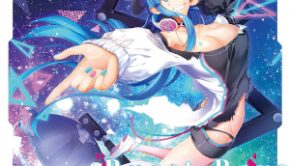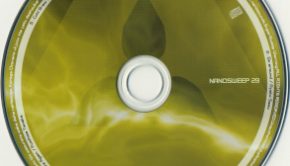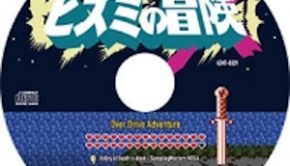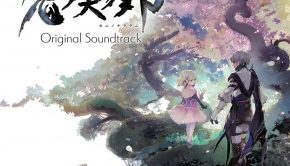Nobuyoshi Sano Profile
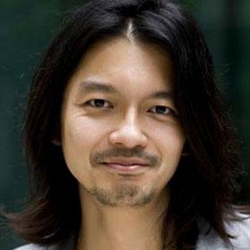 |
Also Known As: 佐野 信義 (さの のぶよし) / Denji Sano / Nobu44 / sanodg |
| Date of Birth: January 19, 1969 (Mishima) |
|
| Residence: Tokyo |
|
| Game Works: Tekken, Ridge Racer, Drakengard, KORG DS |
|
| Official Site: Japanese Site |
History
| Organisation | Type | Tenure | Role |
| Namco | Game Developer | 1992 – 2001 | Composer, Sound Designer |
| Manikyua-Dan | Music Group | 1993 – 1999 | Co-Founder, Artist |
| Sampling Masters | Music Group | 1993 – 1999 | Co-Founder, Artist |
| Oriental Magnetic Yellow | Music Group | 1994 – 2001 | Co-Founder, Artist, Keyboards |
| Cavia | Game Developer | 2001 – | Composer, Sound Director |
| DS-10 Trio | Music Group | 2008 – 2010 | Co-Founder, Artist, Synthesizer |
| DG-10 | Music Group | 2009 – | Founder, Producer |
| Detune | Software Developer, Record Label | 2010 – | Founder, President, Composer |
| GE-ON-DAN | Artist Collective | 2010 – 2011 | Member |
Biography
Detune president Nobuyoshi Sano, better known as sanodg, is a prolific composer known for pioneering sounds on Tekken, Ridge Racer, Drakengard, and music creation programs. Born on January 19, 1969 in Mishima, Sano started learning to play the piano and harmonica at the age of seven. He started to compose instinctively on the piano, learning by ear which chord combinations and progressions sounded best. As he entered high school, he encountered the music of Yellow Magic Orchestra and bought his first records, “Rydeen” and “Technopolis”. Inspired by their precedent, the self-taught musician started to produce electronic music of his own using an electone and, later, a KORG MS-10 synthesizer; guided by magazines and manuals, he carefully customised his synthesizer setup and developed a taste for overdubbing synths. Music was not his only passion, however, and he also enjoyed playing video games such as Game & Watch’s handhelds and Space Invaders during his youth. Like several of his contemporaries, his passions crossed when he heard Yellow Magic Orchestra’s Haruomi Hosono interpret Namco’s classics on an arranged album.
After majoring in telecommunication engineering at university, Sano decided to pursue music further and applied to Namco’s sound team. Having impressed seniors such as Hiroyuki Kawada and Junko Ozawa with his demo tape and interview responses, the artist was taken on during 1992. He made his debut with the arcade gun game Zombie Castle, where he handled all aspects of sound production under the supervision of his seniors; he accommodated the technical restrictions of the hardware in order to produce some stimulating jazz-tinged music. Inspired by the precedent set by Shinji Hosoe’s F/A, Sano decided to channel influences from underground techno music on his second score, the sports game Numan Athletics. The result impressed his colleague so much that he was recruited to work on the music and sound effects for the international smash hit Ridge Racer during 1993. While Sano only produced one track, “Rare Hero” — a hybridised techno anthem peppered with voice samples — it became an instant fan favourite and was celebrated with numerous remixes. During his initial years at Namco, he also produced jingles and sound effects for 8 Lines.
His talents now recognised, Sano was invited to participate in a number of original albums produced by Shinji Hosoe. For Troubadour Records’ first release Be Filled With Feeling, Sano evoked the feeling of waking up to a rare snowy day. He went on to make diverse contributions to other concept albums, including Kaki-In, G.T.R., Troubadour, and Zuki-In, in each case demonstrating his curious approaches to layering and hybridisation. He was also recruited to join his colleagues on three units. With Manikyua-Dan, he explored writing pop songs for the first time on the original album Minna no Manikyua and cover album Anime de Pon. Parodying Ryuichi Sakamoto with the cover band Oriental Magnetic Yellow, he received the opportunity to revisit the compositions of his childhood favourites, Yellow Magic Orchestra. Parodying the legendary Ryuichi Sakamoto, Sano took a leading role on their debut albums. Also a member of the unit Xeno-Gramophone, he commemorated the second anniversary of Namco’s theme park on the Celtic image album The Story of Elds. With an altogether separate doujin circle, Sano also sneaked in a contribution to the experimental album Rising Earth.
Sano’s scoring assignments grew more prominent during his middle years at Namco. To pursue electronic music production, he formed the Sampling Masters with Hosoe, Ayako Saso, and Takayuki Aihara. Alongside them, he once again caused a stir with his two contributions to 1995’s Ridge Racer 2 — a wilder, faster remix of “Rare Hero” and the ethereal new composition “Grip” — and also incorporated both pieces into the Laser Disc and PlayStation adaptations of the series. Ascending to the role of sound producer on Rave Racer, Sano offered some eclectic sounds. Between such works, he was responsible for the jazz soundtrack of Dunk Mania and enhanced the narrative of for Galaxian 3: Attack of the Zolgear. Increasingly flirting with Namco’s console division, Sano also helped to adapt the scores of Tekken and Tekken 2 for the PlayStation; he made an effort to preserve the twilight mood of the stage themes, while segueing gamers into action. Under the alias Denji Sano, the artist also contributed a sophisticated electronic remix on the Tekken 2 Strike Arranges in 1996. In small but memorable guest contributions, Sano also contributed contemporary music to Mach Breakers, Dirt Dash, Prop Cycle, Dancing Eyes, and the two versions of Xevious 3D/G.
While the other members of Sampling Masters left Namco in 1996, Sano decided to stay on and was appointed sound director. He was soon awarded the lead role on the eagerly anticipated Tekken 3 and scored the entire arcade version of the game with Keiichi Okabe. Deviating from the ambient approaches of previous titles, Sano took the series’ music in a cooler direction with urban breakbeats and shredding guitars. Creating an all-new score for the PlayStation version, Sano created an international stir with his big beat approach inspired by The Prodigy. However, he regretted that the restrictions of the PlayStation prevented better sound quality and interactive implementation. Also taking substantial role on the brawler Tekken Tag Tournament in 1999, Sano felt more liberated by the PlayStation 2’s hardware and arranged his four stage themes from the arcade version with cutting-edge samples. During his final years at Namco, Sano served as the sound producer for World Kicks and Gunmen Wars, though neither title performed well at arcades. He also revisited his routes with a rendition of “Rare Hero” on Ridge Racer V, between creating a minimalistic new track and two bootleg remixes.
Despite no longer sharing their workplace, Sano continued to work closely with Hosoe, Aihara, and Saso on several productions between 1996 and 2000. His idiosyncratic contributions to the original electronic albums Sampling Masters 2, Sampling Masters 3, and Julianna’s Tsunashima complemented his contemporaries and were greeted with warm reception. Continuing to develop his participation in two other units, the composer penned two light-hearted songs for Manikyua-Dan’s studio album Maninology and performed on three further tribute albums by Oriental Magnetic Yellow; however, he notes that he has mixed feelings about the quality of one of these albums, Techno de Ruck. Also through Troubadour Records, he co-produced two tribute singles with Keiichi Okabe: “Mainland Voyage” and “Twist of Fate”. Sano closed his time at Namco working on the sound design of the sequel Starblade: Operation Blue Star, though the game regrettably did not make it past its testing phases. Shortly thereafter, he once again received an invitation to join another company — this time courtesy of Ace Combat designer Takuya Iwasaki. Feeling somewhat dissatisfied with recent developments at Namco, he accepted and left his post to join small developer Cavia in September 2001.
At Cavia, Sano led the sound of several game productions of varying size. Firstly, he served as sound producer for the game-to-anime adaptation One Piece: Secret Treasure of the Seven Islands for the Game Boy Advance; however, he elected to outsource composition to more experienced handheld composers. The artist flexed his creative muscles once again as the sound director and score composer of the light gun title Resident Evil: Dead Aim during 2003. The score complemented the game with its eerie ambient soundscapes and intense combat cues, but interestingly deviated from the orchestral direction of past scores in favour of electronic timbres. Despite being employed at Arika, Sano was still free to participate on other productions in his spare time. He notably reunited with Namco’s Hiroshi Okubo to offer original pieces to albums such as Steal the Scene, Swinging Circuit, Delight in Daylight, FM Sound Module Maniax, and 7090 Audio Machine; he showed his distinctive fingerprints on each of these works, while making a number of audacious decisions. Continuing to work sporadically as a remixer, he also made legendary contributions to the ensemble arranged albums dedicated to Phantasy Star Online and Rogue Galaxy.
Despite usually being on target with his experiments, Sano’s approach to Square Enix’s Drakengard caused controversy across the industry. Inspired by the Chemical Brothers, he and Aihara recorded phrases of symphonic compositions with the Tokyo New City Orchestra and mixed, layered, and looped them in a way that would emphasise a feeling of chaos and madness in the game’s war-torn battlefields. Even the game’s ending theme, Sano’s “Exhausted”, was abstract and disorientating. The soundtrack received harsh criticism from reviewers for being too repetitive and grating, though a tantalised cult audience successfully campaigned for a reprint. Discouraged nevertheless, Sano decided to have no direct role on Cavia’s subsequent titles Drakengard 2 and Bullet Witch; instead he encouraged external teams to develop a more conventional symphonic approach. The artist nevertheless returned to a composing role on the PlayStation 2 adaptation Ghost in the Shell: Stand-Alone Complex. While Yoko Kanno’s anime score set an intimidating precedent, Sano felt he was a good fit to develop the series’ abstract electronically-oriented approach and offered some fascinating themes. He also carefully compiled his most creative additions to Cavia’s scores and original albums into the album sanodg works in 2006.
During his residency at Cavia, Sano contributed to several collaborative projects by other companies. Having been such a major part of Ridge Racer’s history, Sano was asked to return to Ridge Racer 6 and Ridge Racer PSP during 2005; mixing homages to classic tracks with new driving sounds, the artist still maintained his grip on listeners. The following year, Sano contributed a handful of tunes to Tekken 5 and Ridge Racer 6. With beatmania IIDX 14’s “Playball”, Sano also made a late entry into the Bemani franchise in 2007; he went on to make remarkable additions to the subsequent two games in the series and offer a dub remix of his friend L.E.D.’s work on the album Denjin K. Also lending a hand with NBGI’s rhythm games, he contributed the bizarre original composition “Taiko Time” to Taiko: Drum Master 14 in 2010. His other accomplishments during the same period included a rare vocal composition on Message, the vocoded theme music for the French channel Nolife, and two rich arrangements dedicated to Mushihimesama Futari and Arcana Heart 2.
In 2007, Sano inspired the concept of the KORG DS-10. This music creation program emulated the sound of analog synthesizers through the speakers of the DS and was accessible to the masses through its touch screen functionality. To demonstrate its capabilities, Sano formed the DS-10 Trio with the program’s co-producers Michio Okamiya and Yasunori Mitsuda. Together, they have performed game remixes and humorous originals with the program at high-profile events such as Extra: Hyper Game Music Event 2008, Betta Flash x DS-10, J-Popcon 2009, and DG-10 Live at Liquid Room. Inspired by these successes, Sano also went on to mastermind another trio, DG-10, featuring three female pop idols; with the support from 5pb., the trio has performed renditions of originals, anime themes, and mainstream favourites across four studio albums. Strengthened by these successes, he went on to produce two other pieces of software. One was the KORG DS-10 Plus, which expanded the usability of the synthesizer with various additional features. The other was bQLSI Star Laser, an unexpected retro shooter for the iPhone. On both projects, he worked closely with Mitsuda and his associate programmers and designers at Procyon Studio.
During May 2010, Nobuyoshi Sano left Cavia to form his own production company Detune. With backing from KORG and creative support from Mitsuda and Okamiya, the artist produced several successors to the DS-10. The KORG M01 offers a more elaborate workstation than for the DS and offers greater capacity for songwriting. The music production app KORG iMS-20 has extended the concept of virtual synthesizers to the iPad. To promote both items, Sano has appeared at various events and concerts. Between such projects, Sano has continued to pursue independent music activities. Most notably, he published his first true solo album, Brightness, through his company in September 2010; an unrestrained display of Sano’s instinctive musicianship, the album dazzled listeners throughout with its uplifting timbres and rhythms. In a further surprising work, he arranged half of the Persona 3 Portable Voice Mix Arrange in his first true collaboration with Shinji Hosoe for a decade. In guest spots, he made memorable contributions to tribute albums dedicated to Castlevania, Nier, and Mega Man, between writing an uplifting theme song for Criminal Girls.
After several years away, Sano reunited with Namco Bandai Games on Tekken Tag Tournament 2. He offered a range of cutting-edge contributions for the arcade version, including the adaptive final stage theme, and supplemented the console port with additional music. The artist worked further with the company’s sound team on discs Opening Gambit and Ridge Racer Planetary Sounds. But the success of his Detune productions have inspired a number of new releases in 2012, including several well-received apps for the iOS. I Am Sampler and I Am Synth are simple but powerful software for casual users, while the iYM2151 enables users to authenticlaly recreate the sound of 80s computer games through FM synthesis. To celebrate the success of these synthesizers, Sano organised and published a multi-artist tribute album, the Denji Mashi-Mashi Original Soundtrack. Also continuing to pen original albums, he offered a subtle follow-up to Brightness with gradation and penned music to pictures for the M3 exclusive Sanodg’s Drawings for 23 minutes at an Exhibition. Clearly at the dawn of a new era, Sano’s future productions include further Detune synthesizers and the music for Tekken x Street Fighter.
References:
– Various Game & Album Credits
– VGMdb Discography
– Company Site (Japanese)
– Interview with Game-Online (English, August 2001)
– Interview with Destructoid (English, November 2008)
– Interview with GameSetWatch (English, December 2008)
– Interview with GA-Core (Japanese, June 2009)
© Biography by Chris Greening (July 2011). Last updated on December 30, 2012. Do not republish without formal permission.
Posted on December 30, 2012 by Chris Greening. Last modified on March 21, 2014.

